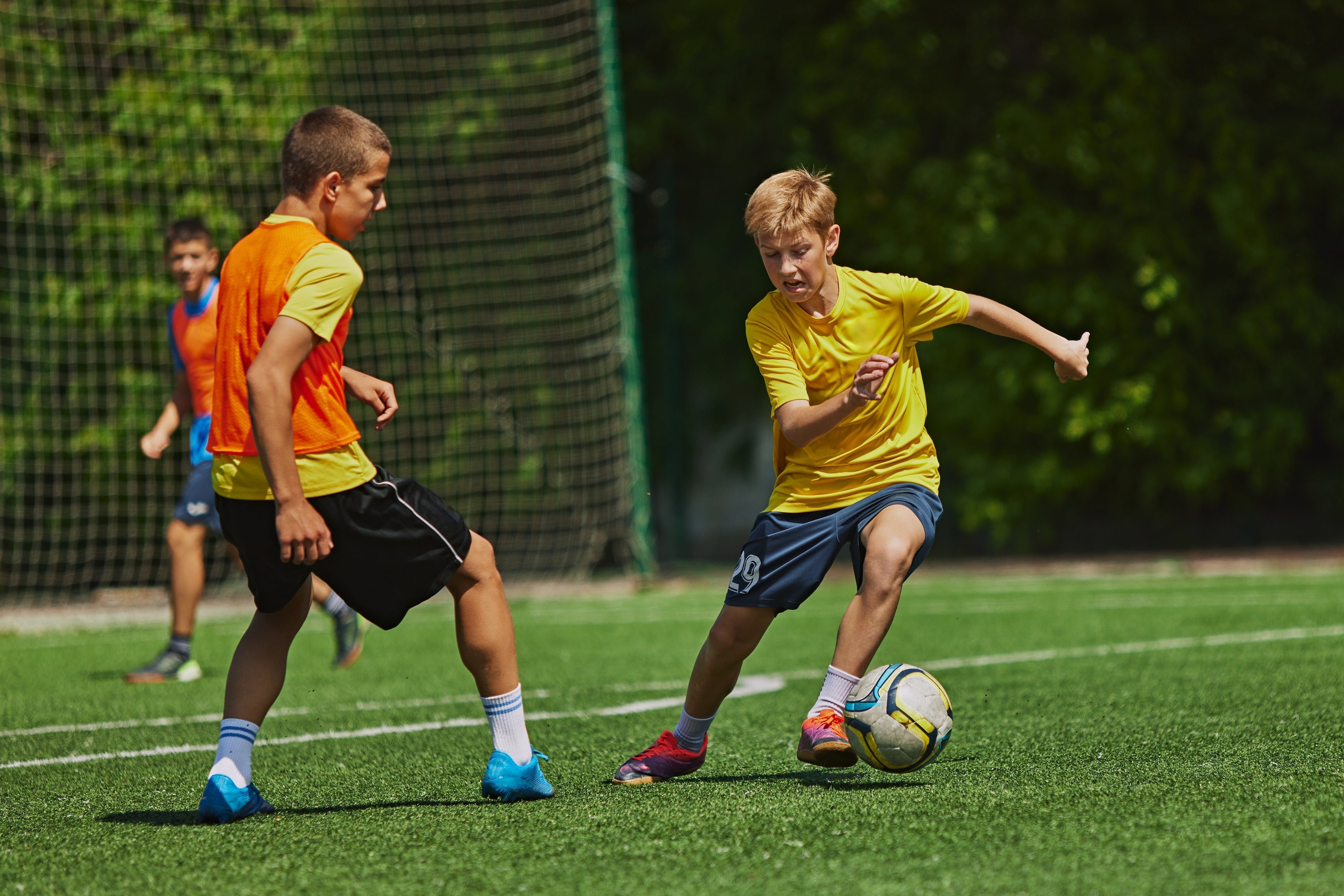
Funding Heat Safety: How Schools Can Protect Student Athletes from Heat-Related Illness
Introduction
As climate patterns shift and record-breaking temperatures become more common, schools across the country face a growing challenge: protecting student athletes from potentially dangerous heat exposure. Heat-related illnesses affect thousands of young athletes annually, with sometimes devastating consequences. While the need for specialized cooling equipment, hydration stations, and monitoring tools is clear, many school athletic departments struggle with limited budgets that simply can't accommodate these additional expenses.
This article presents practical, field-tested approaches for schools to secure the necessary funding for heat safety equipment without compromising other essential educational needs. By implementing these strategies, schools can create safer environments for student athletes while also building stronger community connections.
Understanding the Need: Essential Heat Safety Equipment
Before exploring funding solutions, it's important to understand what equipment provides the most effective protection against heat-related illness:
- Portable Cooling Stations : Misting fans, cooling tents, and portable air conditioners that create recovery zones for athletes during practice and competition.
- Wet Bulb Globe Temperature (WBGT) Monitors: These devices measure heat stress in direct sunlight, accounting for temperature, humidity, wind speed, sun angle, and cloud cover.
- Hydration Systems: Large-capacity water stations, individual water bottles, and electrolyte supplements.
- Immersion Tubs: For rapid cooling in emergency situations, these tubs can be life-saving when filled with ice water.
- Cooling Vests and Towels: Personal cooling equipment that helps regulate body temperature during activity.
Fundraising Strategies for Heat Safety Equipment
1. Apply for Sports Safety Grants
Numerous organizations offer grants specifically for athletic safety equipment:
- National Athletic Trainers' Association (NATA): The NATA Research & Education Foundation provides funding for schools implementing heat safety programs.
- NFL Foundation Grassroots Program: This program focuses on health and safety improvements for youth football programs, including heat safety equipment.
- Local Community Foundations: Many communities have health-focused foundations that award grants to improve student wellness and safety.
- State Athletic Associations: Some state athletic governing bodies have safety equipment grant programs for member schools.
Success Story: Jefferson High School in Georgia secured a $4,000 grant from their state athletic association to purchase two immersion tubs and WBGT monitors after documenting three heat-related emergencies in one season.
2. Create Corporate Sponsorship Packages
Local businesses often seek meaningful community involvement opportunities:
- Named Equipment Sponsorships: Offer to prominently display a business's name on cooling stations or hydration systems.
- Safety Sponsor Program: Create tiered sponsorship levels (Gold, Silver, Bronze) with corresponding recognition benefits.
- Healthcare Partnerships: Local hospitals and medical practices are natural partners for athlete safety initiatives.
- Sports Retailer Collaborations: Sporting goods stores may provide equipment at reduced costs in exchange for recognition.
Success Story: Central High School partnered with Regional Medical Center to fund a comprehensive heat safety program. The hospital provided $7,500 for equipment in exchange for recognition as the "Official Healthcare Provider" of the school's athletic program.
3. Launch Crowdfunding Campaigns
Online fundraising platforms can reach a broader audience:
- GoFundMe or DonorsChoose: Create campaigns with compelling stories about student athlete safety.
- Alumni Challenges: Engage former students and athletes with matching gift challenges.
- Social Media Challenges: Develop viral content that highlights the importance of heat safety.
- Peer-to-Peer Fundraising: Encourage team members to activate their personal networks.
Success Story: Washington High School's "Beat the Heat" campaign raised $6,200 through a GoFundMe campaign that featured personal stories from student athletes who had experienced heat exhaustion.
4. Organize Heat Safety Awareness Events
Community events can raise both funds and awareness:
- Cool Down 5K Runs: Host community races during cooler months with proceeds supporting heat safety equipment.
- Sports Clinics: Partner with local collegiate or professional athletes to host skills clinics with registration fees funding safety equipment.
- Parent Education Nights: Combine fundraising with educational programming about preventing heat-related illness.
- Community Health Fairs: Partner with healthcare providers to host events focused on athlete safety.
Success Story: Riverside High School's "Cool Down 5K" became an annual community event, raising over $3,000 each year while educating hundreds of community members about heat safety.
5. Pursue Equipment Sharing Arrangements
Collaborative approaches can reduce costs:
- School District Pooling: Multiple schools can share portable equipment like cooling stations.
- Community College Partnerships: Partner with local higher education institutions that may have access to more resources.
- Youth Sports League Collaborations: Share costs with community athletic organizations that use school facilities.
- Emergency Services Partnerships: Some fire departments may assist with immersion tubs or other emergency equipment.
Success Story: Three rural schools in Arizona pooled resources to purchase two mobile cooling station trailers that rotate between schools according to game and practice schedules, saving each school approximately $2,000.
6. Apply for Federal and State Education Funding
Some governmental funding sources can be applied to athletic safety:
- Title IV Grants: Part of the Every Student Succeeds Act (ESSA) includes funding for school health and safety programs.
- FEMA Preparedness Grants: Some schools have successfully applied for emergency preparedness funding that includes heat emergency equipment.
- State Department of Education Safety Grants: Many states offer specific funding for student safety initiatives.
Success Story: Oakwood School District secured $9,500 in Title IV funding by demonstrating how their heat safety program would improve overall student wellness and reduce absences related to heat illness.
Creating a Sustainable Heat Safety Program
Securing initial funding is just the first step. Consider these approaches for long-term sustainability:
- Establish an Athletic Safety Fund: Create a dedicated account where a percentage of all athletic fundraising automatically supports safety equipment maintenance and replacement.
- Develop a Replacement Schedule: Plan for equipment lifecycle costs by creating a multi-year replacement and maintenance schedule.
- Document Outcomes: Track reduced heat-related incidents and share this data with sponsors and supporters to demonstrate impact.
- Train Grant Writers: Invest in grant writing training for athletic department staff or partner with education foundation personnel.
- Annual Safety Fundraisers: Designate one annual event specifically for safety equipment funding.
Conclusion
Protecting student athletes from heat-related illness doesn't have to break the school budget. By implementing these diverse fundraising strategies, schools can acquire essential safety equipment while also building stronger community connections and raising awareness about heat safety.
Remember that the most successful fundraising approaches combine compelling stories about student well-being with clear, specific goals. When communities understand the tangible benefits of heat safety equipment—and the potential consequences of its absence—they're more likely to support these critical initiatives.
By taking proactive steps today, schools can ensure their student athletes remain safe even as climate challenges intensify, creating athletic programs where performance and safety go hand in hand.
Resources
-
National Athletic Trainers' Association Heat Illness Prevention Resources: www.nata.org/practice-patient-care/health-issues/heat-illness
-
CDC Heat Safety Guidelines for Schools: www.cdc.gov/disasters/extremeheat/athletes.html
-
Korey Stringer Institute: ksi.uconn.edu
-
Sample Grant Applications for Athletic Safety Equipment: www.schoolgrants.org
- Heat Safety Equipment Comparison Guide: www.athleticsafety.org/heat

